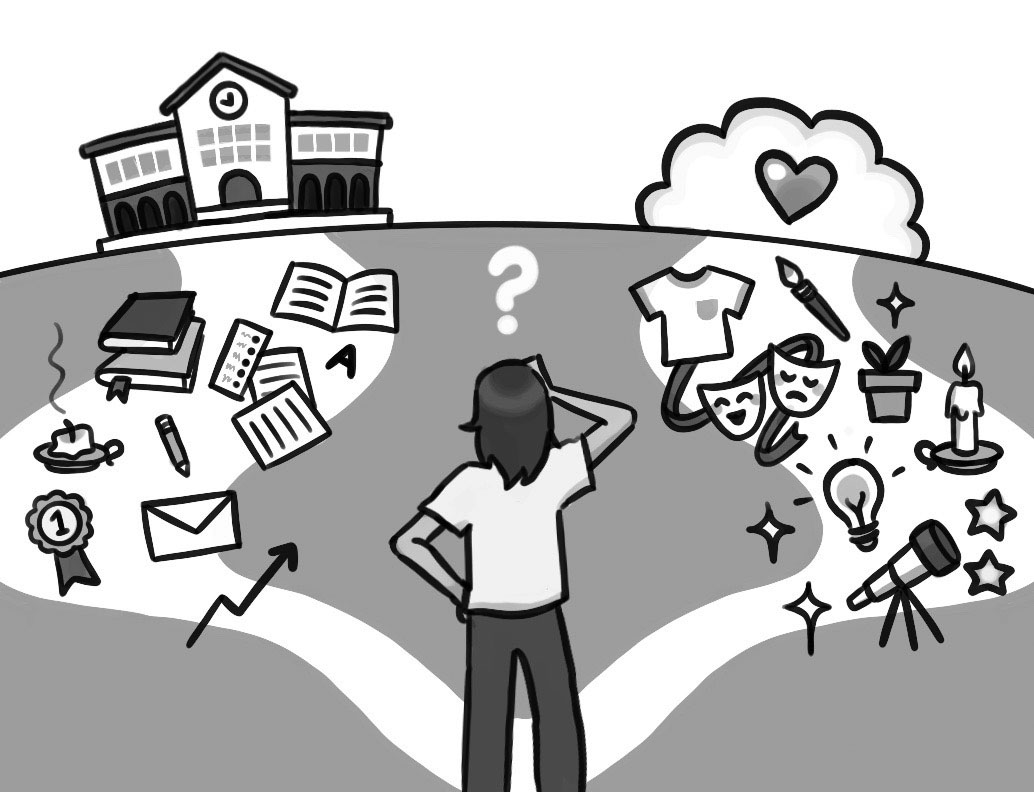On Dec. 12, a long awaited email arrived — Mudd Library was about to reopen after months of renovation. This email marked the return to a once-beloved space at the Upper School, where I had spent so many hours studying and hanging out with friends. The library had always been a vibrant hub for students to gather, unwind and prepare for exams while engaging in fun conversations. Having gone almost four months without a proper place to relax or socialize — Feldman-Horn mock library lacked Mudd Library’s unique atmosphere — I hoped the new library would be a breath of fresh air.
When I first saw the new library, my excitement clouded my initial judgment. I was in awe of the vast array of study spaces, the new furniture and the bunk beds in the new Learning Center. But it slowly dawned on me that Mudd Library has truly never been more isolating.
The library was once a more open area. Featuring a spacious floor plan and towering bookshelves, students had the option to sit down in groups at tables, couches and beanbags to work together. Light conversations were possible all throughout its two floors, and those who needed to focus quietly could go into Silent Study for a private work space.
The new layout, however, forces students to choose between productivity and socialization. Turn left, and there is a narrow path lined with individual workstations. Turn right, and there are a number of couches devoid of outlets or tables, making it impossible to be productive. Instead of the group study rooms serving as a place for group projects or studying, they are rented out by students to socialize and eat lunch. These spaces have become limited but in high demand as students attempt to return to the library at the same rate they did before.
Even the large study room is filled with rows of built-in tables, which make the layout seem more like a traditional classroom than a collaborative space. Even some of the other classrooms in the upper library and Kutler are more conducive to group work, with tables that can be moved closer to one another. It is also nearly unbearable to work in due to the lack of ventilation.
It is not necessarily that the library has gotten worse. Rather, it has turned into an exclusive haven for only the most studious at the Upper School. For those seeking a tranquil space for focused work, the new library could not have been better. But to half of the student population who thinks the new library is worse for socializing, according to a Chronicle poll, this shift only exacerbated the challenge of fostering connections and collaborative efforts. Academic pressure already compels students to study alone in silent areas, and the library’s development only further entrenches that.
There are still social spaces in the new library, like the couches on the bottom floor or the tables on the second floor. The problem is that they are broadly separated from work-oriented spaces. There are no areas to relax with friends while also studying like in the old library — only one or the other is possible. This seems like overdesigning, where creating one specific purpose for every place in the library reduces its overall usefulness.
Ultimately, any space for students should aim to create a healthy and productive sense of routine. A comfortable, consistent environment in which people can see their friends is more important to student wellness and overall success than a reading nook. Students will eventually adjust to the new space — in just two years there will be no students on the upper school campus who remember the old library.
We obviously can’t reverse the remodel, nor should we. The renovation did make some legitimately much-needed updates to the old library, and a few simple fixes could alleviate most of the problems with the new setup. For instance, we should prevent students from eating lunch in the group study so that it remains open for students to work. Instead, we should add more table space on the Quad or in the lounge to accommodate those who are used to eating in the library. The library can once again be both a productive and a social space, so long as the school recognizes that they shouldn’t try to separate the two.
































